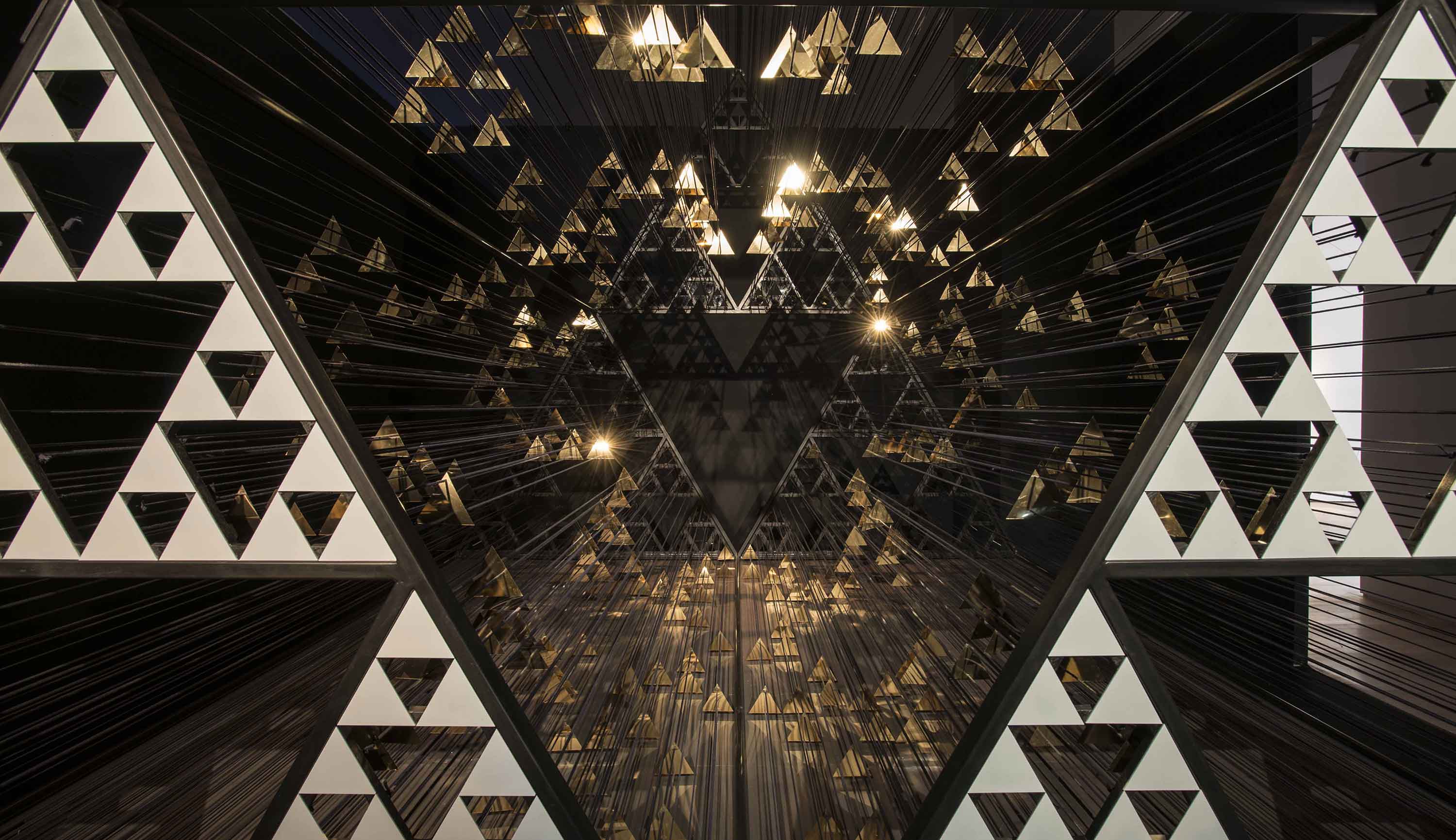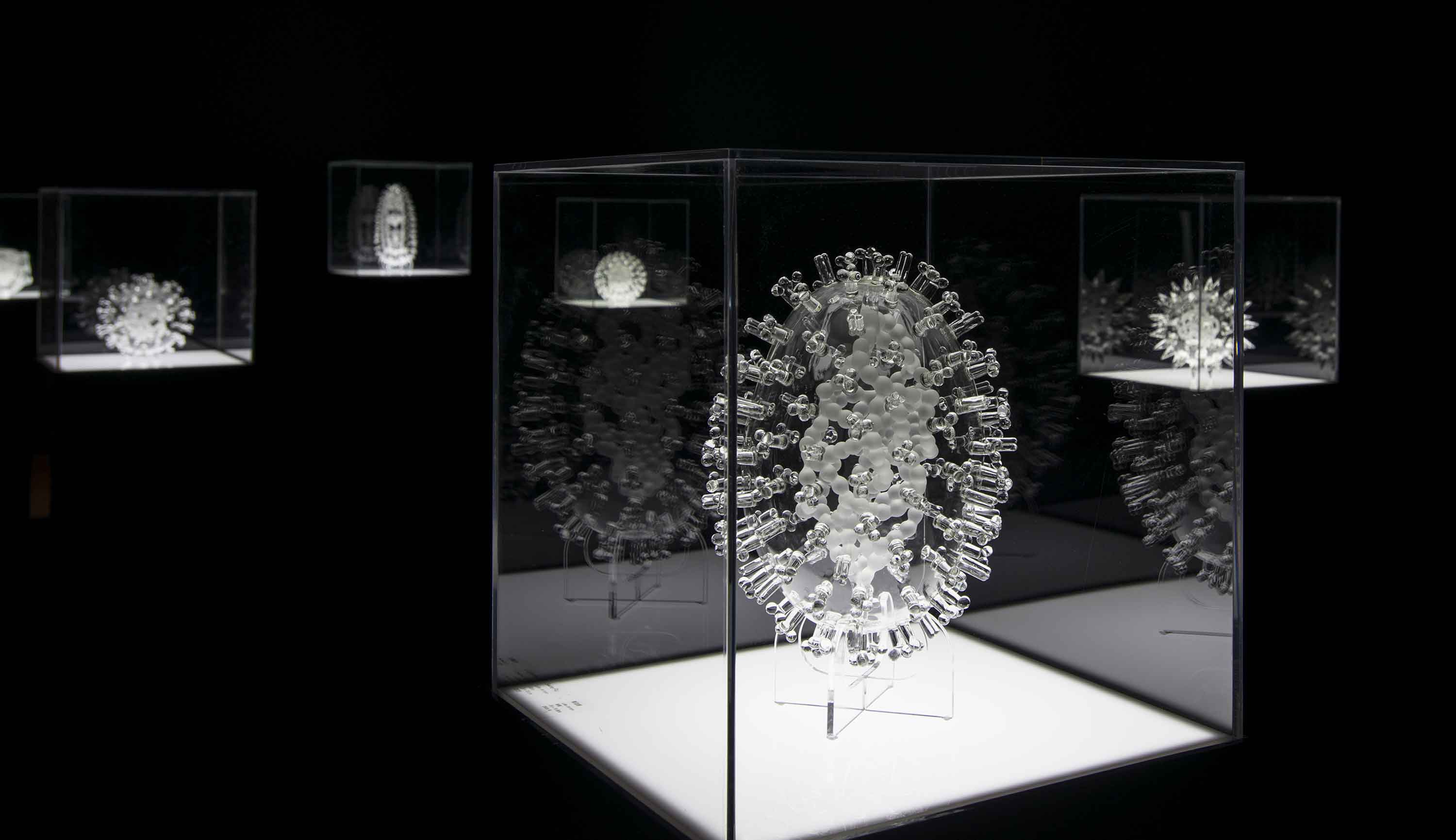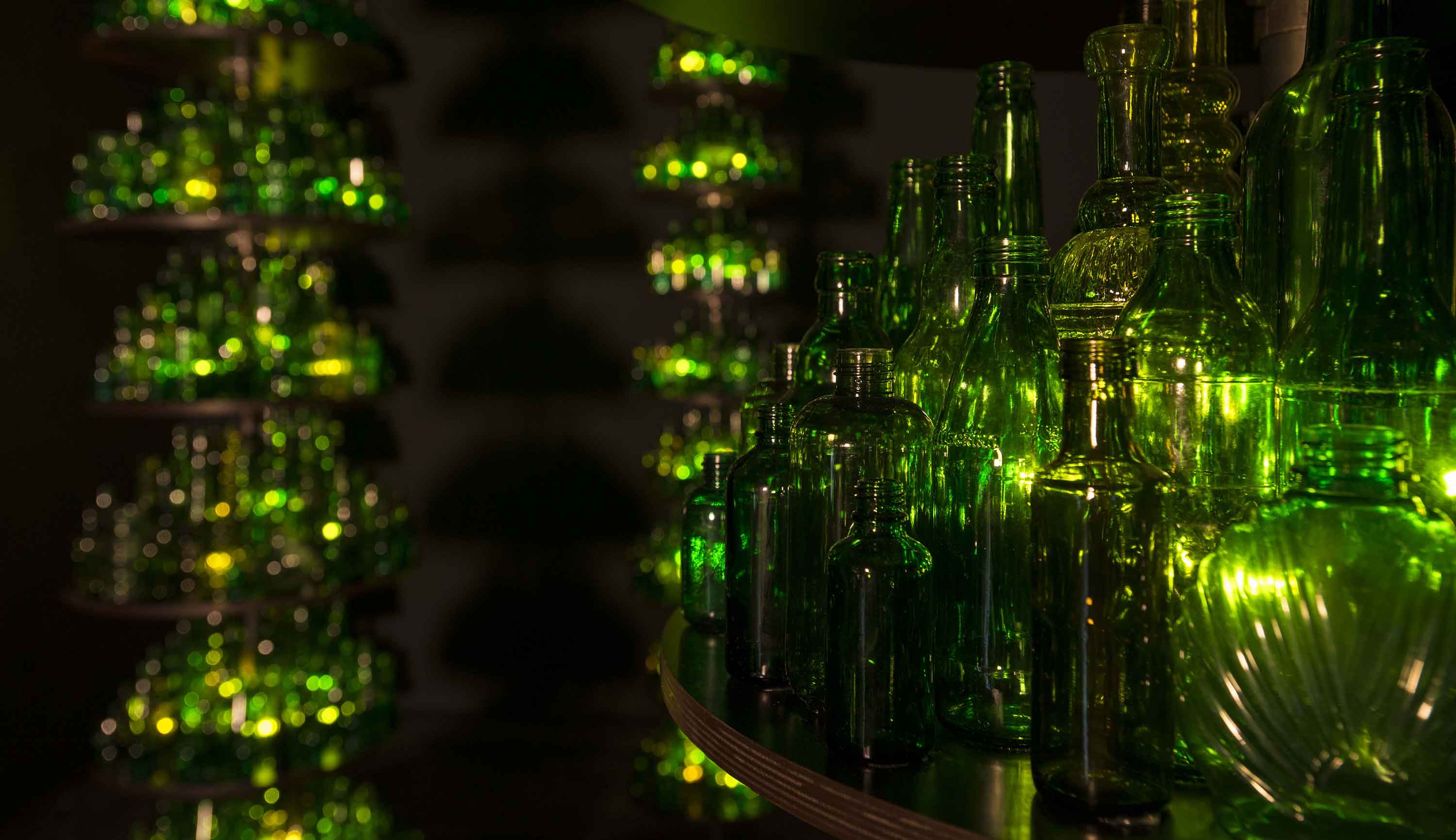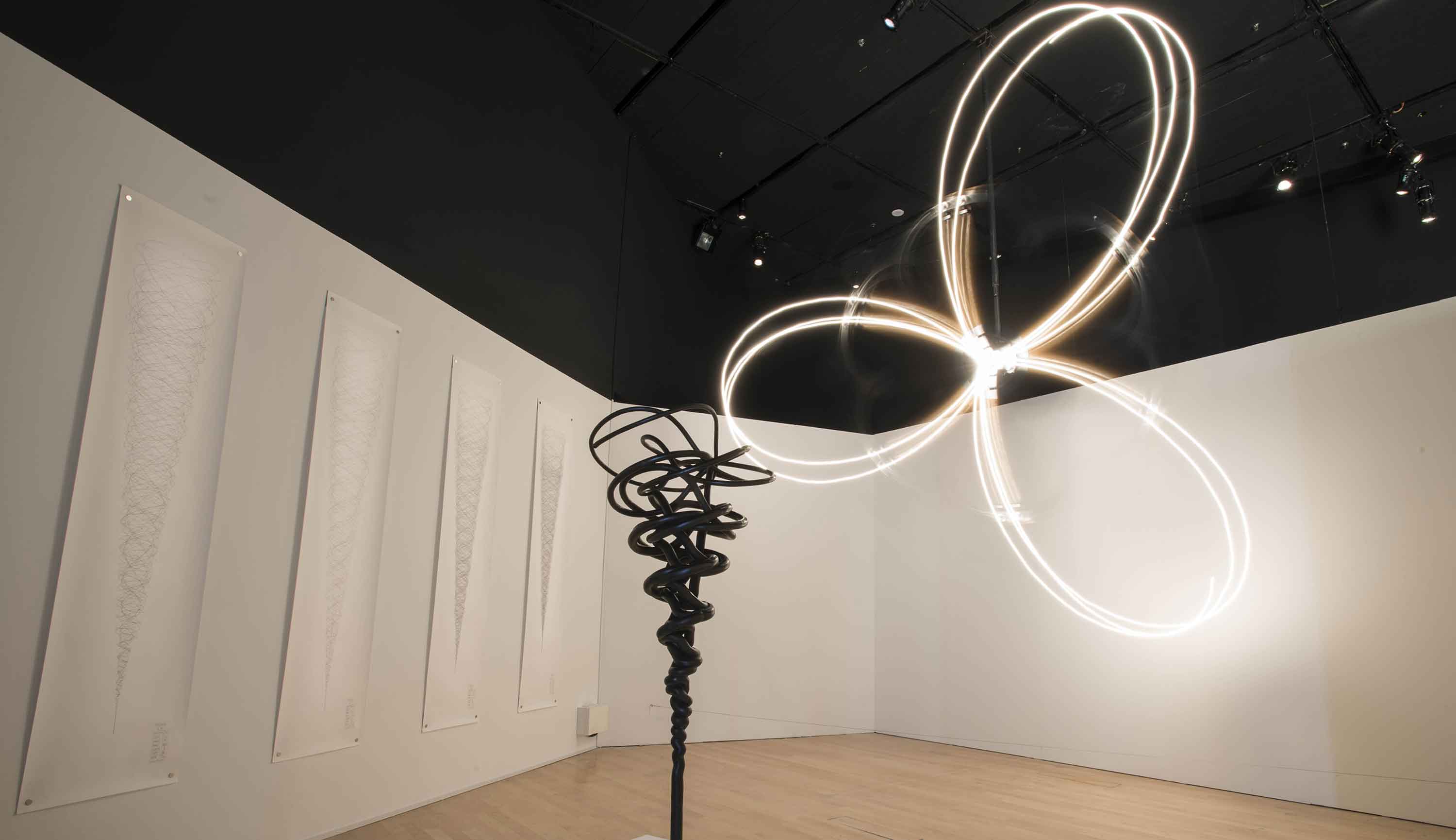Beyond the presentation of original masterpieces from da Vinci’s Codex Atlanticus and paintings from the School of Leonardo, the exhibition also includes interactive exhibits, technology, film, and models of his inventions. A key component of the show is five contemporary art installations, including three new commissions, by five international and local artists. Drawing inspiration from da Vinci’s work in mathematics, natural sciences, technology, architecture and music, these art installations provide new insights into da Vinci's ideas and processes, revealing how strikingly current his thinking is today.
The contemporary art installations are by:
- WY-TO (Singapore) - responding to da Vinci's legacy in mathematics
- Luke Jerram (United Kingdom) - responding to da Vinci's legacy in natural sciences
- Donna Ong (Singapore) - responding to da Vinci's legacy in architecture
- Semiconductor (United Kingdom) - responding to da Vinci's legacy in technology
- Conrad Shawcross (United Kingdom) - responding to da Vinci's legacy in music
- ARTISTS
- Contemporary Art Image Gallery
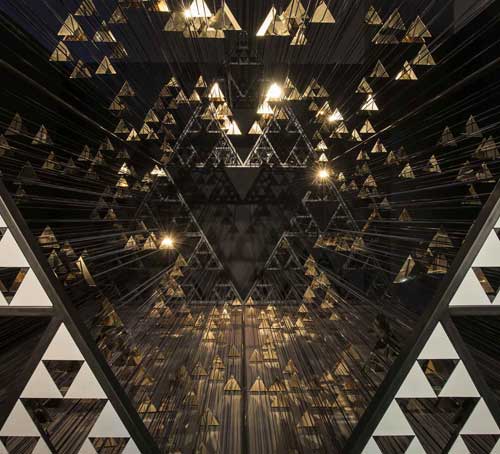
WY-TO
Through The Looking Glass, 2014
This installation by the architectural design company, WY-TO, represents fractals. It is commissioned especially for the exhibition and appears in the Mathematics section of the show, reflecting the legacy of da Vinci's work in this subject.
A fractal is a natural phenomenon, or a mathematical set, that exhibits a repeating pattern that displays at every scale. Present in nature, yet easily created by human means, they blur the boundaries of what is “natural” and “man-made”. The installation presents an organic fractal within a mathematically-generated one. Repeated elements of a large triangle appear to be randomly arranged, but when viewed from the front, they come together to create a complex and beautiful seemingly never-ending pattern.
Much of Leonardo da Vinci’s design inspiration came from observing and reimagining nature using mathematical principles. This was particular the case in his studies of topology. He believed that by extracting the underlying order of all things, natural and man-made design could be merged. As such, Through the Looking Glass, can be seen as as a direct legacy of da Vinci's approach to mathematics, made material.
WY-TO is an architectural design practice based in both Singapore and Paris, spearheaded by co-founders Yann Follain and Pauline Gaudry. WY-TO’s mission is to combine functionality and dream, to create spaces for everyday life, such as cultural, residential, commercial and urban spaces, as well as exhibitions and art installations. Yann Follain is curator for the Singapore Collection at the National Design Center, and he is leading with Gallagher&Associates the exhibition design for the Permanent Collection of The National Gallery Singapore. He was Architectural Associate Partner of ArtStage in Singapore in 2013, and the Exhibition Art Director of the 2010 and 2011 editions of the Singapore Architecture Festival. He is adjunct teacher at the Glasgow School of Art Singapore in Interior Architecture.
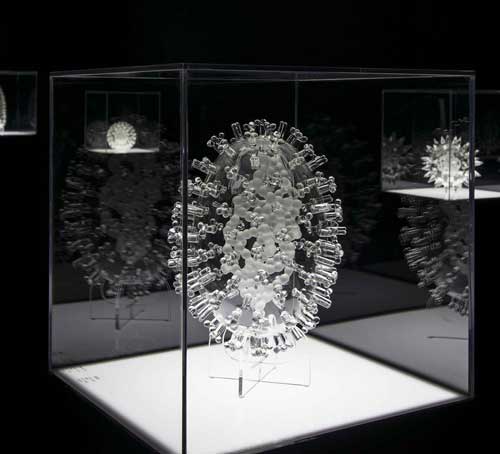
Luke Jerram
Glass Microbiology, 2014
Glass Microbiology by the artist Luke Jerram consists of a series of glass sculptures which represent viruses and protozoa. It appears in the Natural Sciences section of the exhibition, and reflects the legacy of da Vinci's thinking in this area.
The artworks are designed through studying and then combining scientific diagrams of viruses and protozoa, together with imagery made using an electron microscope. In effect, they are three-dimensional diagrams of microbiology, comparable to da Vinci’s diagrammatic drawings. They are as accurate as they can be, within the limits of scientific understanding and glass-blowing techniques. Similar to da Vinci’s illustrative drawings in the Codex Atlanticus, the glass sculptures aim to reveal properties of hidden structures of naturally occurring phenomenon.
Luke Jerram is an artist whose multidisciplinary practice involves the creation of sculptures, installations, and performance. Living in the UK but working internationally, Jerram’s artwork often depicts scientific phenomena. Significant works include Tide, Sky Orchestra, Aeolus, and Play Me I’m Yours. He is unique in that his work has not only been exhibited at major international arts venues such as Museum of Modern Art in New York (USA), Mori Art Museum in Tokyo (Japan), De La Warr Pavilion in Bexhill, the ICA in London, and FACT in Liverpool (UK), but also written about in science journals such as Nature, Science and The Lancet. His artworks are powerful and poetic evocations of how artists can interpret science. Da Vinci: Shaping the Future is the first time his work has been shown in Singapore.
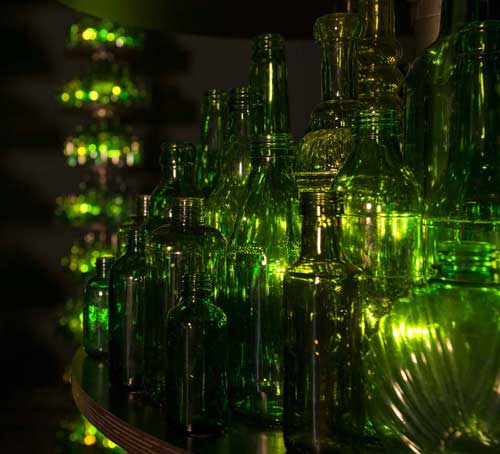
Donna Ong
The Forest Speaks Back II, 2014
Singaporean artist, Donna Ong, has been commissioned to create a new installation for the Architecture section of the exhibition. Her new work directly echoes Leonardo da Vinci's own approach to architecture, whilst also commenting on Singapore's particular approach to city-planning.
Da Vinci had an unusually pragmatic approach to architecture that differed from the theoretical and theological approach of his contemporaries. The startling structural forms he designed were often the result of applying his knowledge and intellect to finding solutions to structural problems. Da Vinci made new associations between nature and architecture, freely borrowing his observations and knowledge of one to apply to another, in order depict and design his buildings and cities. In The Forest Speaks Back II, Ong has taken a similar approach. Nature, in particular, a tropical forest, is used as the inspiration for the design of architectural structures. The sculptural forms of the installation visually represent the pragmatic approach taken by Singapore to define and construct her own national identity through the careful and deliberate use of tropical plants, skyscrapers and urban design.
Donna Ong is an installation artist from Singapore, best known for her evocative and thought-provoking environments made from found objects. Her works have been exhibited both locally as well as internationally in shows such as the Jakarta Biennale (Indonesia), Kuandu Biennale (Taiwan), Moscow Biennale (Russia) and the inaugural Singapore Biennale. Her installations have appeared in prestigious museums and institutions worldwide, such as the Singapore Art Museum, National Museum of Singapore, Hara Museum (Japan) and the Djanogly Art Gallery in Nottingham University (England). Her artwork is also in several international collections such as the Deutsche Bank Collection and Tiroche DeLeon Art Collection.
Semiconductor
Catching the Light, 2014
Catching the Light is a moving image installation by the artist duo, Semiconductor, commissioned especially for the Technology section of the exhibition.
It is created using visual data collected by space telescopes. The six metre wide projection is made up of thousands of images which have been assembled to create time-lapse sequences of the night-sky. By collaging these images of space together, Semiconductor have disrupted their original spatial relationships, to create new patterns. They have, in effect, remapped the sky. By working with the most current telescope technology, Semiconductor are working at the limits of knowledge, where scientists are seeing phenomena for the first time. Their exploration of how technology can radically extend our capacity for observation and understanding reflects not only Leonardo da Vinci’s passion for observation, but also his approach to technology.
Semiconductor is UK artist duo Ruth Jarman and Joe Gerhardt. They explore the material nature of our world, how we experience it and how we try to make an understanding of it, questioning our place in the physical universe. Their unique approach has won them fellowships and residencies in significant scientific locations such as NASA’s Space Sciences Lab, the Galapagos Islands and the Smithsonian National Museum of Natural History. They have exhibited globally including at the Venice Biennale (Italy), The Royal Academy, the ICA, FACT (UK), the Exploratorium, San Francisco Museum of Modern Art (USA), and the House of Electronic Arts (Switzerland).
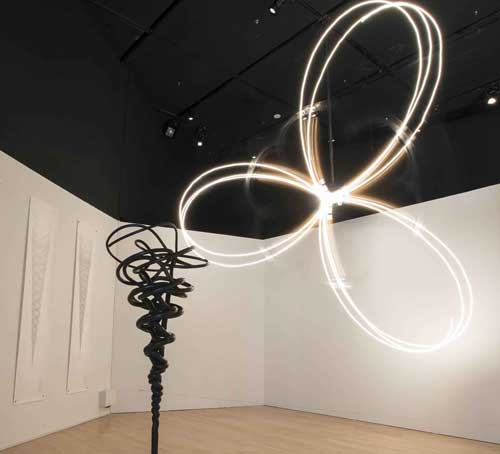
Conrad Shawcross
Projections of the Perfect Third, 2011
This installation by the artist, Conrad Shawcross, is part of the Music section of the exhibition, and reflect's da Vinci's approach to music and sound. Projections of the Perfect Third is a series of artworks that visualise musical chords. The three works are a kinetic light work called, Limit of Everything (5:4), a sculpture called Harmonic Manifold 1, and a set of drawings called Perfect Third (5:4) 1-5. The works all centre around a "perfect third" – a particular type of musical chord. The works are inspired by the harmonograph – a machine for drawing music. The drawings have been produced by Shawcross's version of a harmonograph, the bronze sculpture is a physical version of the musical chord cast in metal; and the kinetic light sculpture brings three lights into convergence on each rotation, poetically referencing the "perfect third" chord.
The installation echoes da Vinci's own fascination with musical chords, and of 'perfect' musical ratios, in particular. Like Shawcross, da Vinci was interested in the material expression of sound, which can be seen in his own designs for musical instruments.
Conrad Shawcross is an artist based in London, who explores subjects that lie on the borders of geometry and philosophy, physics and metaphysics. Different technologies and natural forces inspire his forms, but his mysterious machines and structures remain enigmatic, filled with paradox and wonder. Some have an absurdist melancholy feel, while others tend to the sublime. His work has been exhibited at major institutions internationally, including MONA in Tasmania (Australia); Grand Palais and Palais de Tokyo in Paris (France); and the National Gallery, Hayward Gallery, and the Science Museum in London (UK).

